To understand why Kurtley Beale still gets goosebumps talking about it three years later, you have to recognise the trauma and sense of dislocation preceding that day.
For most Wallabies fans, the 2017 Bledisloe Cup win at Suncorp Stadium was a memorable event where Michael Cheika’s Wallabies snapped a seven-game losing streak for a rare, sweet victory.
But for Beale, two life journeys merged that day.
The young man who grew up in the glare of the media spotlight once again put his rugby talents on display, but this time the game featured Beale as the centrepiece of a week-long celebration of our nation’s Indigenous heritage.
The joyous, raucous, wonderful night of rugby and family was a very public culmination of Beale’s work to both find himself, and to help the game he loves connect with his people.
As a player, not many could spot gaps like Beale, and this night was all about highlighting one in our society that Rugby Australia can help address.
And now, watching Beale visibly react to emotion years past, and talking to other Indigenous leaders in Australian Rugby, a few questions are starkly raised.
Why have only 14 Indigenous men played for the Wallabies, and how on earth are we going to continue to improve things without Kurtley Beale?
Beale, now playing rugby in France, ran out on the field that day in the first Indigenous themed jersey to be worn by an Australian international team.
A jersey that paid homage to the 14 men who had worn the green and gold for Australia representing the Indigenous population.
Bernard Foley ran out alongside his good mate that day and the former Wallabies fly-half, who was Kurtley’s roommate that week, saw the impacts of such a big event up close.
And on the field, he certainly felt something different.
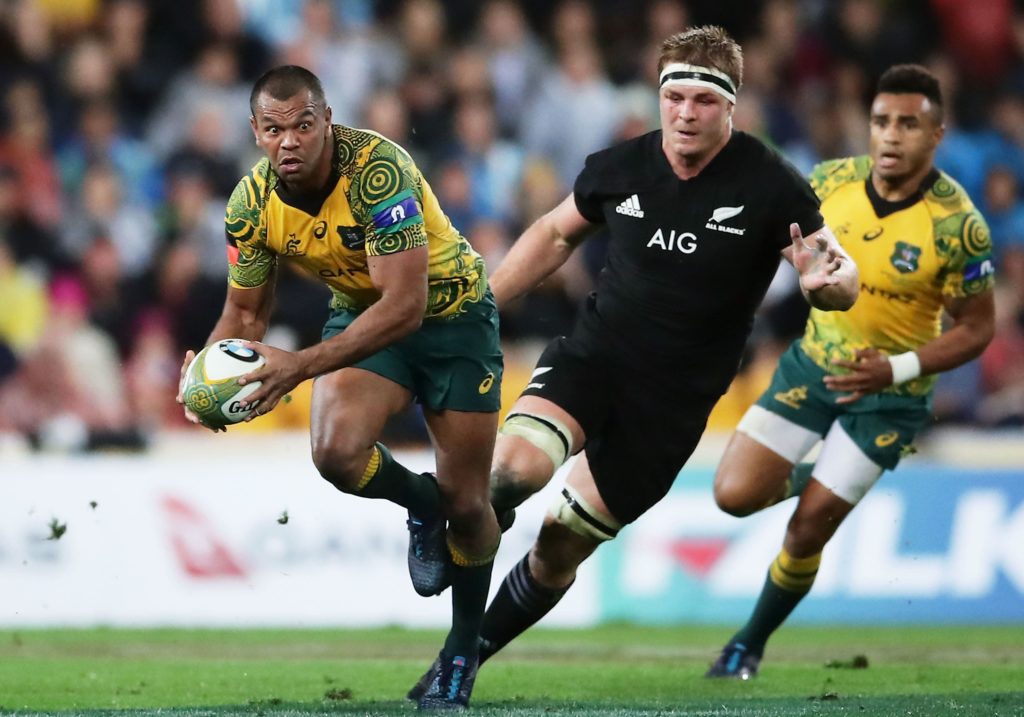
“It was powerful,” Foley says. “It was enormous for all of us, but especially him. I remember running out next to him and just seeing the pride he had on his face. I was lucky enough to room with him that week, and that has been one of my most special weeks in the Wallabies jerseys.
“I think there’s still a lot to be done, but just that week being a lot of work from KB to be at the forefront of making that change has been an honour to see him do that. I know it’s such a passion for him, and how much it means to him, so to have that connection and have the passion that the Wallabies and the Indigenous community can work together has been really positive and I hope we see it continue.”
Thirty of Beale’s family were in the crowd, the stadium was alive with celebrations of Aboriginal culture and Australia’s heritage, melded with the regular Wallabies colours.
It was enormous for all of us, but especially him. I remember running out next to him and just seeing the pride he had on his face.
Former Wallabies fly-half Bernard Foley
Beale was a little awestruck.
“I just had that huge sense of pride, raw emotion,” Beale recalls. “At the start of the week Chek got everyone in in a team meeting, we got to see the jersey that we’re wearing on the weekend and all the boys were quite kind of moved by just seeing the jersey.
“We were playing for these guys and obviously the broader community. And that was just a really special week. Seeing the guys really embrace the jersey, embrace the whole week.
“I’ve been in sheds throughout weeks for big games, but this one was just probably the most special. I feel like it galvanised us and just seeing that impact and how that can, you know…really, I’m getting goosebumps now just thinking about it, but talking about it.
“It was really moving. [Then] you run out, you’re seeing Indigenous flags flying all around SunCorp … you can see how it just brought everyone together. After the Welcome to Country [ceremony], you can see everyone cheering, cuddling, waving the Wallaby Green and Gold and the Indigenous flag. It was definitely a night to remember.”
The young man who played rugby for Sydney’s St Josephs College in the GPS schoolboy competition may have dreamed of wearing Wallaby gold one day, but the realisation of what an Indigenous themed Wallabies celebration might mean for him would be learned later in life.
A young Beale didn’t understand or really connect to his people’s culture, and a mature reflection on his past showed him clearly how he was affected by an Australian society that diminished or dismissed its Indigenous roots, alienating and traumatising a people.
“Unfortunately, the current generation of Indigenous people in Australia, we are affected,” Beale says. “It’s called transgenerational trauma. So, we’re affected by all the trauma that’s happened before us with our great grandparents, great aunts and uncles. The stolen generation, the trauma that was caused to a lot of the Indigenous people back then it’s passed down through to the generation today.
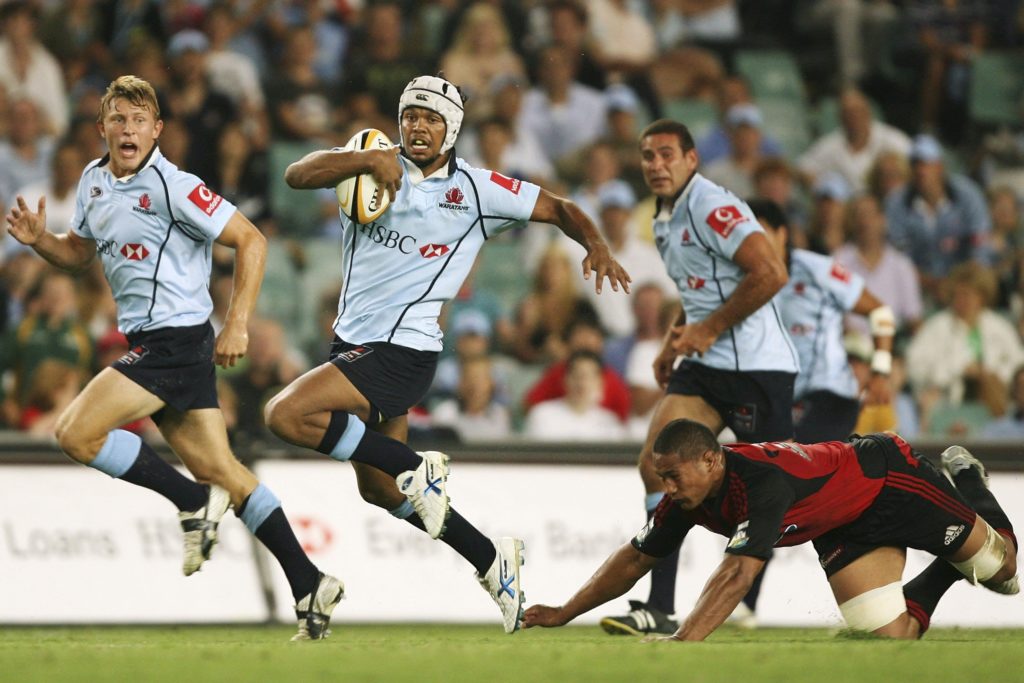
“So, there’s a loss of, there’s no self-esteem … they feel shame, they feel embarrassed about who they are, and they don’t want to speak up about themselves. And that’s because they’ve lost who they are.
“It’s important that you kind of understand why you feel the way you are is because you are still suffering from a lot of the pain that’s passed down through generations and generations, and once I understood that I started to kind of learn a little bit more about it and I think you know the education allowed me to kind of build the self-esteem back up, the confidence, and learning off my friends and family it gave me a lot more.
“I mean, I was kind of confused a lot, but once I started to learn a lot about my culture, and I started to feel a little bit more proud and I felt like I had a lot of strength there to push me to be comfortable in my own skin.
“And I think it’s important for Indigenous people to get back to knowing their roots, their culture, more in depth. I know that’s what helped me … I understood a lot more about who I really was and, and allowed me to kind of fit in and, and have the strength and the character to kind of stand up for myself and for the people around me.”
Born and bred in the Darug area in Blacktown, Sydney, raised in Mt Druitt, Beale is part of the Kamilaroi tribe of the New England area of NSW, one of the biggest tribes in the state.
And Beale not only delved into his culture, he stepped up to lead others there too. He feels a responsibility to not only educate young Indigenous people, but those within the game of rugby union and the wider community.
So, there’s a loss of, there’s no self-esteem … they feel shame, they feel embarrassed about who they are, and they don’t want to speak up about themselves. And that’s because they’ve lost who they are.
Former Wallabies utility back Kurtley Beale
The gap that needs to be closed is obvious to Beale, and remains a challenge in Australian society. The goal for Beale has been to help others to find their own pathways.
“I’m really proud to be able to step up and hopefully lead in a way that can influence and educate … not just with rugby but in society in general,” Beale says. “I think it’s extremely important to keep moving forward together as one because I still feel like there’s a big gap there that needs to be closed. Creating a jersey that represents Indigenous people at the highest level like the Wallabies Indigenous jersey, those are the pinnacle moments that can create a closing the gap sensation.”
And to reflect harshly on the game in Australia, it seems the gap is most clearly visible in rugby union.
For a sport that needs to find a way to grow again, recognising why the playing base and fan base are not representative of the wider population would be a good start.
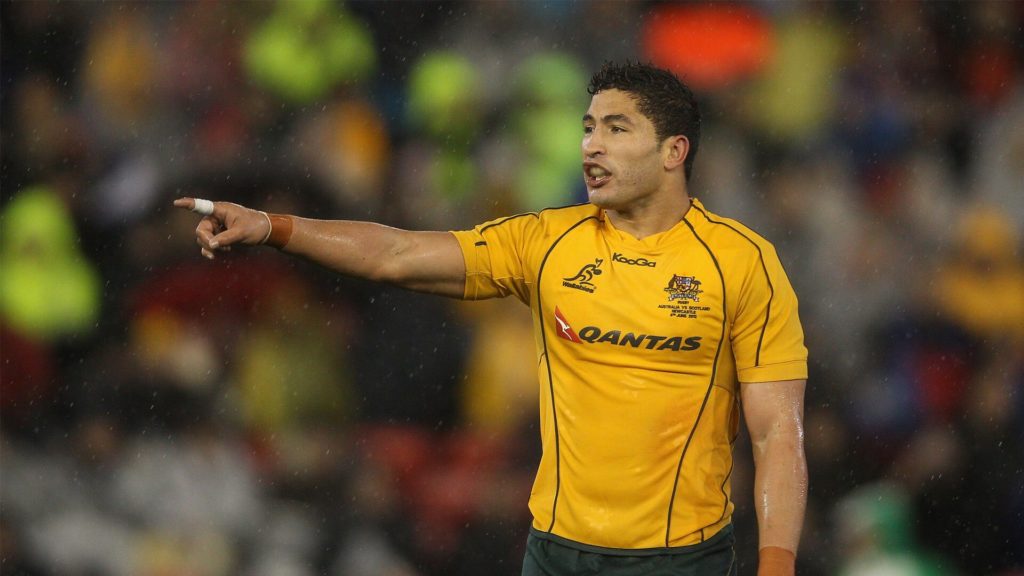
Beale was only the 13th Indigenous Australian to play a game with a long and storied history in Australia.
The others were Cecil Ramalli, Lloyd McDermott, Mark, Glen and Gary Ella, Lloyd Walker, Andrew Walker, Jim Williams, Wendell Sailor, Timana Tahu, Anthony and Saia Fainga’a and Matt Hodgson.
McDermott was the first recognised Indigenous Wallaby, and a foundation set up in his name has been the major source of rugby’s connection to the Indigenous communities.
For Glen Ella, despite the good work of the ‘Lloydies’ the numbers just do not stack up.
“This is a hard question,” Glen says. “This has been going on for a long time. And it’s really sad that we are still talking about it and not having the involvement of a lot of Aboriginals in the game.
“It’s sad to say that over the period of time that Australian rugby has been formed that we’ve only had 14 internationals. You know, it’s terrible if you look at the other codes [in Australia]. Rugby League is about 14 per cent and AFL 15 to 16 per cent Indigenous participation in the in the top level, and we’ve only had 14 total so you’ve got to really look at the programme from the start.”
“All the states and unions need to come together and have a really serious think about this because we have got some talented kids out there and they’re getting picked up by league, they’re getting picked up by AFL, and they’re not playing rugby.”
Glen appreciates the efforts with the Indigenous jersey but is concerned that may seem an outlier without the community participation he is certain can be fostered.
“It’s great that Rugby Australia recognised that Indigenous space there but they’ve got to do something more about it,” Glen says. “It’s a bit of tokenism to say stick together, we’re wearing the jumpers to celebrate indigenous participation. But the participation is minimal. If they’re fair dinkum we’d have like a Latrell Mitchell or Greg Inglis running around in our team. Where are they?
“We need those types of players coming through, we need to put them into programmes and then we need to as I said before, we need to see him, we need to visit them. We need to bring up their skills, especially in rugby.”
Glen and his brother Gary recognise that rugby’s failure to connect to Aboriginal communities is a clear example of the traditional nature of rugby union playing and support base in Australia.
As Beale outlined the struggles the Indigenous communities can face, one obvious difference for those of Indigenous heritage is socio-economic.
It’s a bit of tokenism to say stick together, we’re wearing the jumpers to celebrate indigenous participation. But the participation is minimal. If they’re fair dinkum we’d have like a Latrell Mitchell or Greg Inglis running around in our team. Where are they?
Former Wallaby Glen Ella
Rugby in Australia has been strongly connected to the private school system, which does not generally see Indigenous students attend.
“We’ve focussed on Sevens rugby [with competitions such as the Ella Sevens] for promotion and community reach out on purpose,” Gary says. “Because we can get a lot of young players coming in and enjoying that more open game where there’s a lot of space for them to turn around, use their pace and demonstrate their skills.
“Obviously with the 15s we’d still like to push that as well, the only problem that we have is rugby is not as strong in the public schools as it used to be and that’s where a lot of Aboriginal people are going.”
Gary hopes that, despite the Covid headwinds facing Australian rugby, the new leadership in the game can see the opportunity to not only connect to the Aboriginal community for players but for cultural experiences.
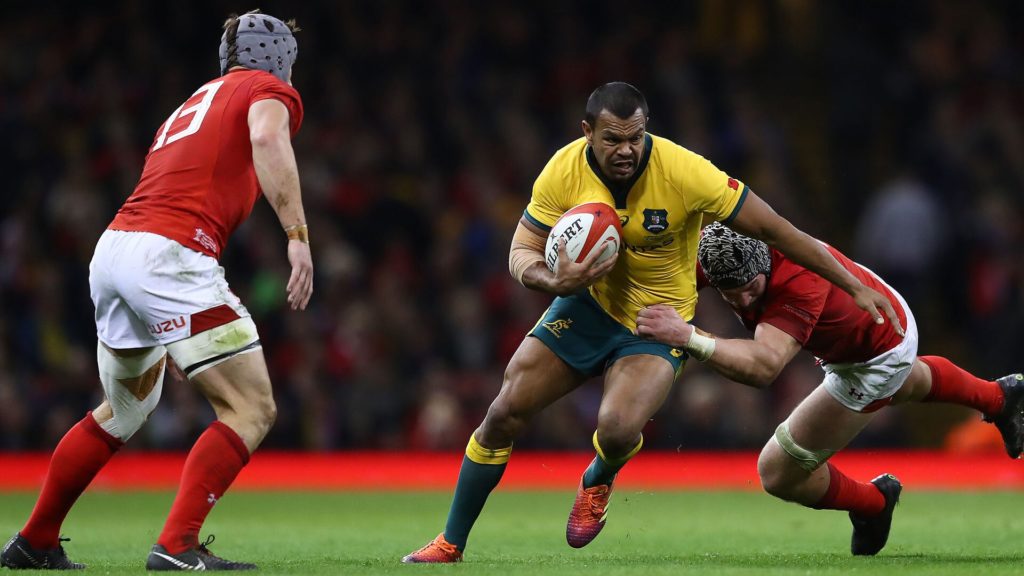
Gary is part of the Indigenous Advisory Committee for Rugby Australia, a group made up of three members of the Llyod McDermott Foundation and three members from Rugby Australia.
“I think there’s got to be a programme that’s put together that’s actually run by Australian Rugby,” Gary says. “The Lloyd McDermott Foundation can provide the necessary support to keep players enjoying the game and sticking with the game and adding culture to the whole set-up.
“But it’s Rugby Australia that runs the sport, so we want them to actually run those development programmes and continue to be involved in them. I’ve had a quick conversation with Hamish McLennan who’s the new chair of Australian rugby and he’s pretty keen to have further in-depth conversations with myself and the board members of the Foundation, so we’re fairly keen, and we’re pretty confident that we can develop some fairly firm programmes and continue to build our relationship.
“We need more resources and development in these areas. And not just for the Indigenous community. I think if we can make sure that we’re paying more attention to resources and development from the grassroots up, I think that’s where we’ll get a lot of success, you’ll see a lot of improvement. “
Last year’s Dream Big Time programme was a good start, with a Sevens structure established connecting the Indigenous communities around the country to a pathway of participation. Covid has stopped that for the moment, and the Ella brothers are hoping it will return when possible.
There are also smaller programmes in individual schools or clubs showing signs of successful participation and progression, but more is needed.
Particularly with Beale stepping off the national rugby stage.
Finding the next Kurtley Beale, or the next 10 Kurtley Beales, is a goal that would be a worthy headliner for the new and improved Rugby Australia.
Not just because of the outstanding talent in the Indigenous communities, but as a talismanic step forward for a game that needs to grow past its cliched outlines, and modernise its makeup.
As the All Blacks live and breathe their haka, and the South Africans embrace their multi-cultural heritage, there’s a new sense of self that would benefit the Wallabies at the apex of the game and the community that supports them.
Of that, Bernard Foley is certain.
“I think the indigenous community, their history, should be weaved through the Wallabies history. So that we can build off that to give us a stronger identity, and a stronger connection to the indigenous community.
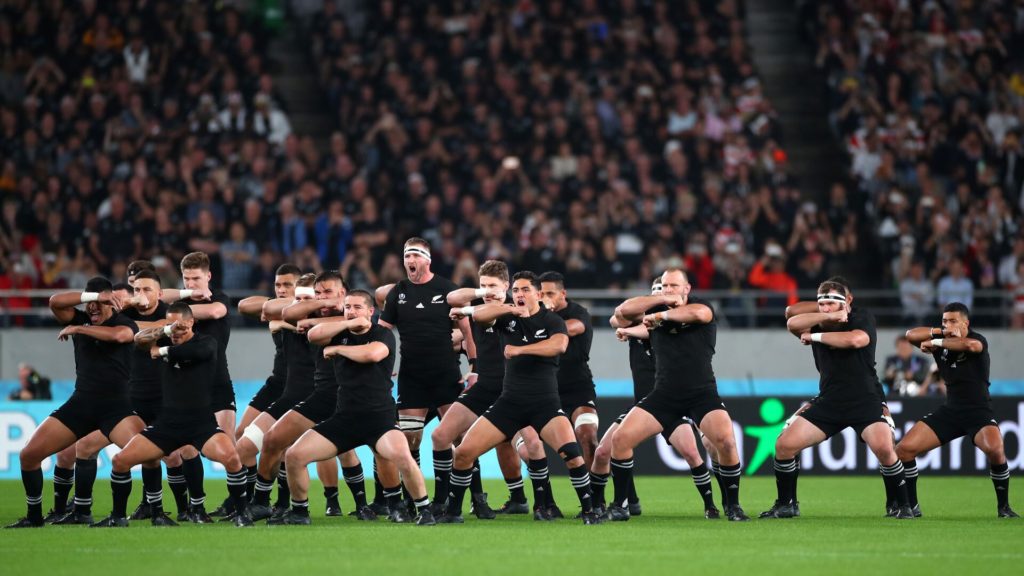
“We know how talented and what phenomenal sports people they are, but also their cultures and their practices and their traditions go back 40,000 years so, for us, we can gain so much if we can connect with that.
“Bridging that gap between society, sport and the Indigenous community. I think that would be something really special. Probably you have to ask the Indigenous people and you have to ask the teams, but I think we should be at the forefront of bridging that gap and really being inclusive, because that’s what we are in this game. We’re inclusive of everyone of all races of all traditions.”
Foley took an enormous amount from seeing Beale’s connection to and work for his community as a mate and a teammate, an extra burden on top of what other Wallabies carry, and he hopes Beale can recognise what he achieved in his time in Wallabies gold.
I think we should be at the forefront of bridging that gap and really being inclusive, because that’s what we are in this game. We’re inclusive of everyone of all races of all traditions.”
Former Wallabies fly-half Bernard Foley
For Beale, he’d like to see the connection that received a massive boost that day at Suncorp Stadium continue to be nurtured, for both his community and his game.
“[I’d like them to] make sure that there’s always a special game there,” Beale says. “Like one of the Bledisloes. The only thing that I kind of worry about is if it’s token. You’ve got to be proud of it.
“It’s so important that they continue to play in the Indigenous jersey in Test matches and, I think, making sure that there are other elements like a Welcome to Country whenever there’s a Test match played on home soil.
“I think it’s a great opportunity for the game and our country to really pay respects to the First Nations people. And once we see that, and once a lot of people see that, then people will start to understand the significance of why we’re doing it. And then hopefully, that’ll help bridge the gap even more.”
The game should be proud of what Kurtley Beale brought to the jersey, and look to embed a legacy in his name.



Comments
Join free and tell us what you really think!
Sign up for free